Nakayama is in between Narita And Haneda International Airport
<クッキーについての同意並び欧州居住者向けプライバシーポリシー>
中山・下総・散歩道
The Myoken-do Hall In Nakayama Hokekyo-ji
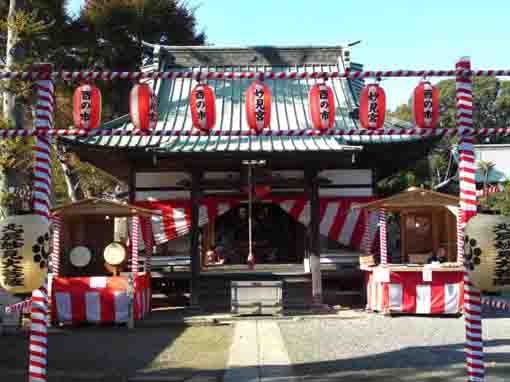
The Myoken-do Hall In Nakayama Hokekyouji Temple
Myoken Sonsei Taisai (The Grand Fair of Myoken Star) is held in the Myokendo Hall of Nakayama Hokekyouji Temple and Tori-no-ichi (the cock fair) where a small Kumade (a bamboo rake) shop opens is also held in front of it in cock days in November annually. Neighbors and supporters of Hokekyouji Temple come to pray for Myoken Sonsei in the cock days. Though Tori no ichi in Nakayama Hokekyouji Temple is very small, it has very long history.The Myoken faith and Tori-no-ichi Fair (Cock Fair)
Looking at the northern ski at night, there is an immovable star. It is the polestar, and the star was deified with the god named 'Hokusin-myoken-daibosatsu'. Generally, it is very popular and affectionately called 'Myoken-san'.In ancient China, people worshipped the sun, the moon and the stars as they could have mysterious power and virtue, so they observed them to govern their countries. And they thought that the Polestar is the king of heavenly bodies since the all heavenly bodies they could see traveled around the polestar as the center of the heaven, then they worshipped it deeply. This was the origin of Myoken Faith. Though Cinese called Polestar Hokushin, Japanese called it Hokushin-Myoken as it was associated with Myoken-bosatsu in Buddhism. As a result, Myouken is the name of Bosatsu, it is defied the Polestar and the Great Bear with the divinity. Myouken suggests Myoken-bosatsu, it is drawn on the center of the Hoshi mandala (the Star Mandala), it is seldom worshipped alone. It is sometimes called 'Sonnosei (the respectable king's star)' and 'Hokushin-Bosatsu'. And it is often confused with the Big Bear.
Myoken-Bosatsu has some miraculous virtues of protecting territories, avoiding fires, giving long lives, healthy childbirth, good matchmakings, recovering eye diseases, supporting poor people and fulfilling of wishes. Moreover,sinc some legends says the Great Bear is the sword to protect the lord of Heaven, it is believed that Myoken is the god of the fortune of war, so Masakado Taira, Kiyomasa Kato and so many bushos faithfully belived as a guardian god. In addition, the Esoteric Buddhism and in Nichiren Sect have Myoken-Bosatsu enshrined as the principle image to recover eyedisease with 'hokuto-ho (hokuto method)' and 'sonsei-ho (method of the respectable king's star) as skills of performing incantations.
The figures on statues and pictures of Myoken-Bosatsu have two or four arms, he rides on a dragon, and some have the Great Bear putting on the hands and others have the Great Bear painted on lotuses in them. Myoken-ko is organized the believers of Nichiren Sect who worship the Myoken-Bosatu.
According to Shinto, Hokushin-Myoken-Daibosatsu is called 'Ame-no-minakanusi'. It came to Japan, there had happened the syncretic fusion of Shintoism and Buddhism on it, and many Japanese put it very important religious position and believe it faithfully everywhere in Japan. Beside the sentence in Kojiki (Records of Ancient Matters) says 'When the heaven and the earth first appear on, the god whose name Ame-no-minakanusi-no-kami first appears on the world. This makes him fused with Hokushin-Myoken-Sonseio on the center of the heaven as the same god. The respectable King of Hokushin-Myoken is the divinity whose regular position is the center of the heaven, so it is admired that he is the respectable king of stars controlling all stars and gods, directions and ways, thus his power also influences among people's fate (stars). It was believed that Hkushin-Myoken-Sonseio is the god who holds power to protect all the stars and fate among the people since ancient ages.
This Hokushin-Myoken-Sonseio is the special god in the basic ideas of Taoism, Divination, Astrology, Feng Shui and the Way of Yin and Yang, so that he has the mighty power to manifest everything, Hokushin-Myoken-Sonseio is widely worshipped among common people faithfully.
Nakayama Tori-no-ichi (The Cock Fair In Nakayama Hokekyo-ji)
Nakayama-Tori-no-Ichi (The Cock Fair at Nakayama Hokekyo-ji Temple) is held at the Myoken-do next to the Soshi-do in Myouken-Sonsei-Taisai-no-hi, in other words, every Tori-no-hi (The Cock Day) in November. In the Myoken-do, Hokushin-Myoken-Sonsei is dedicated, he is the god of peace in the land, avoiding troubles and helping to get good fortune is introduced by the Chiba Clan.According to Myoken-Hongu-Chiba-jinja Shrine Engi (the history of the shrine), Myoken had believed faithfully by the Chiba Clan from generation to generation. When the Founder Nichiren visited the Chiba-jinja Shrine and took an oath of developing and flourishing his religious sect, he got an auspicious augury, so he raised his voice in admiration and said 'The Myoken-Son is very the thing that the god protects my sect.' After his wish had been fulfilled, he dedicated the Lotus Sutra with thin letters written by him.
The Washi-Myoken dedicated at The Washi-jinja Shrine and Chokoku-ji Temple came from Hokushin-Myoken, the enshrine deity at the Chiba-jinja Shrine. And alos Yamatotakeru-no-mikoto dedicated at Aidono who became a swan and flew to Hokuten or Myoken's (the northen heaven) in myth. Therefore poeple think that their wishes get to them in Tori-no-hi.
According to Chokoku-ji Temple in Asakusa Tokyo, Myojo (Venus) started to travel and Washi-Myoken-Daibosatsu appeared, the Founder Nichiren had prayed for the peace of the country at Kobayakawa's residnt (there stands Shuzan-ji Temple) in Washizu, Kazusa-no-kuni (Mobara city, Chiba prefecture). The day is the Cock Day in November
Tori no ichi (The Cock Fair)
Sometimes Tori no ichi implies the market selling beautifully decorated KUMADE (bamboo rakes) like Asagao (morning glory) Fair, Hozuki (Chinese lantern plant) Fair and so on. Accoding to some dictionaries, Tori no ichi is a market opening at the festival of Ootori Jinja Shrine in every cock days in November, thus kumade might not be the main object of the festival. Now Ootori Jinja Shrines dedicate Yamato Takeru no Mikoto as the principle image, and the god was worshipped by sumurai worriers as he would be the god of good fortune in battle, and people living in Edo worshipped him as the god of good fortune in business and bringing good fortune. The shrines dedicate Ymato Takeru no Mikoto in Edo and areas around Edo has opened Tori no ichi (the cock fair). The beginning of selling Kumade started at a Ootori Jinja Shrine in Hanahata Adachi-ku Tokyo since KUMADE could scrape together a lot of gold, silver and treasures, so kumade became the principle lucky charm of the fair. And also according to some tradition, people would bigger kumades than they had bought them last year. Generally, the first cock day is called Ichi no Tori, the second is Ni no Tori and the third is San no Tori. The Tori no Ichi held in Ootori Jinja Shrine in Shitaya Tokyo is the most famous cock fair and several thousand people visit, so the shrine is faithfully called 'Otorisama' and 'Tori no Machi'. In tradition, some said that many fires will happen in the year that has San no Tori. It is because wives in Edo made this rumor to quit their husbands to go out at night to protect their families and houses from fires.Chiba Clan
Chiba Clan was a powerful family in Chiba-gun, Shimousa-no-kuni (Chiba city, Chiba prefecture).There were two clans, one was the descendant of Chiba-kuni-no-miyakko, and another one was the descendant of Yoshihumi Taira of Kanmu Heishi. The Chiba Clan whose ancestor was Tsunekane of Heishi is the most famous. From late Heian period to early Kamakura period, Tunetane and Hirotsune Chiba helped Yoritomo Minamoto the founder of Kamakura Bakufu to join his army. Tsunetane was trusted by Yoritomo and appointed the Shimousa-no-kami (the Governor of Shimousa), and the descendants of him had been appointed it from generation to generation through Kamakura period, so they hold important positions in the Kamakura Shogunate and they had very influential power in Shimousa.
After the period of the Northern and Southern Dynasties, Chiba Clan had got influential power in Hizen-no-kuni (Saga prefecture).
At Kyotoku War in 1454, the Chiba Clan in Kanto region was divided, Tanenao led the head family and joined to the army of the Kanto Kanrei of Uesugi Clan, but Yasutane led the collateral family and joined to the army of the Koga Kubo (Koga shogun) of Nariuji Ashikaga. Finally, Yasutane won the war and overthrew the head family, then he succeeded it. However, Yasutane was defeated and killed by the army of Yoshimasa Ashikaga who was the eighth shogun of Muromachi Shogunate. Then his son, Suketane succeeded tne family, then he tried to build strong relation to the Koga shogun and moved the base from Chiba (Chiba city) to Sakura (Sakura city) to control Kokujin (samurais in his territory).
Late the Warring States Period of 1538, the Chiba Clan joined the army of Ujitsuna Hojo of Sagami-no-kuni (Kanagawa Prefecture) at the first battle of Konodai (Ichikawa city) to get close to him. Toshitane got married with a daughter of Ujiyasu Hojo, because Satomi Clan controlling Awa-no-kuni (the southern Chiba prefecture) gradually increased the power over Kazusa-no-kuni and Shimousa-no-kuni. Tanetomi, the grandson of Toshitane tried to strengthen his territory. After Kunitane, the son of Tanetomi,was killed his vassal suddenly. In 1585, Naoshige, the son of Ujimasa Hojo, succeeded the Chiba Clan. In 1590, it was ruined by Hideyoshi Toyotomi at the battle of Odawara in 1590.
The Soma Family in Iwaki-no-kuni (Fukushima prefecture) was a collateral family of the Chiba Clan.
The Chiba Family faithfully believed Nakayama Hokekyo-ji Temple and Nichiren Sect. Therefore temples and Nichiren Sect had had very influential religious power in the Boso peninsula since late Kamakura period. Sougen-ji Temple in Mobara city and Hondo-ji Temple in Matsudo city were very famous, too. And Nichiga, the fourteenth abbot of Myohon-ji Temple in Kyonan-cho, Awa-gun, Chiba prefecture wrote a dictionary 'Iroha-jisyo'.
参考
デジタル大辞林
明鏡国語辞典
ブリタニカ国際大百科
クロニック戦国全史
市川市ホームページ
法華経寺ホームページ
千葉神社ホームページ
鷲在山長國寺ホームページ
Nakayama Tori-no-ich (The Cock Fair At Nakayama Hokekyo-ji)
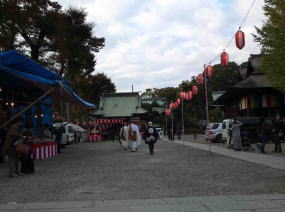
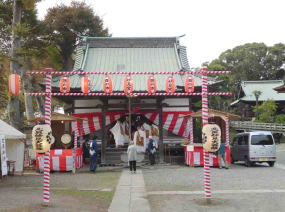
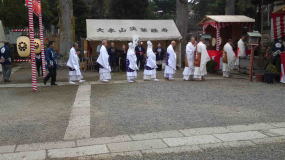
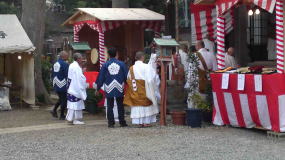
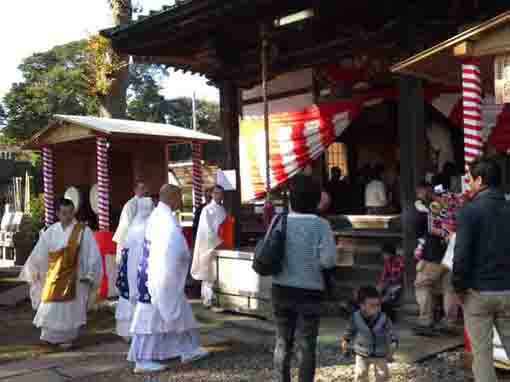
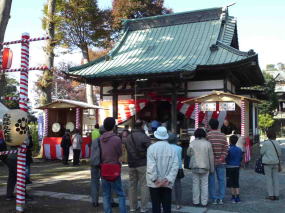
The Access to The Myoken-do Hall In Nakayama Hokekyoji
The Myoken-do Hall In Nakayama Hokekyoji Temple
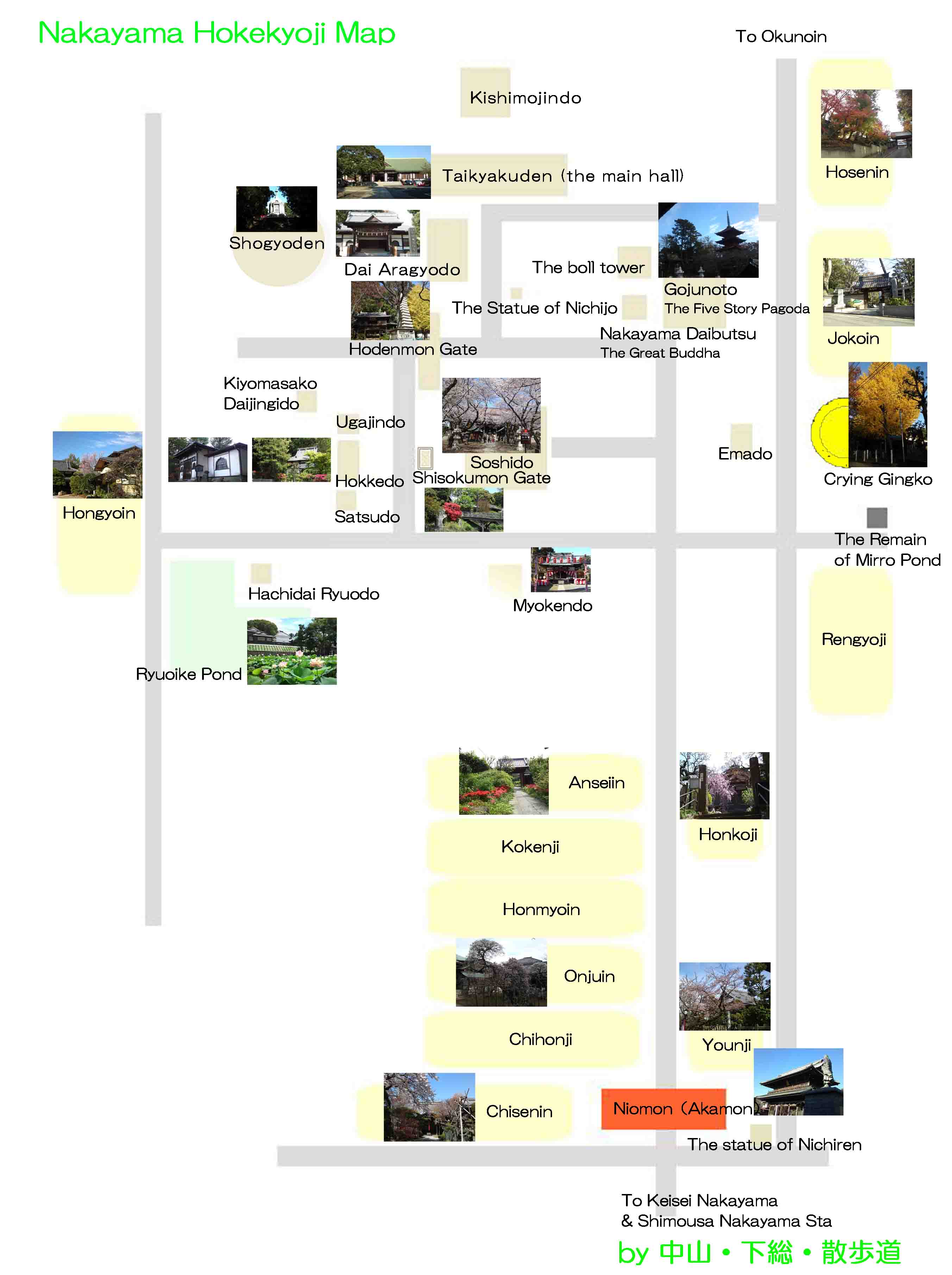
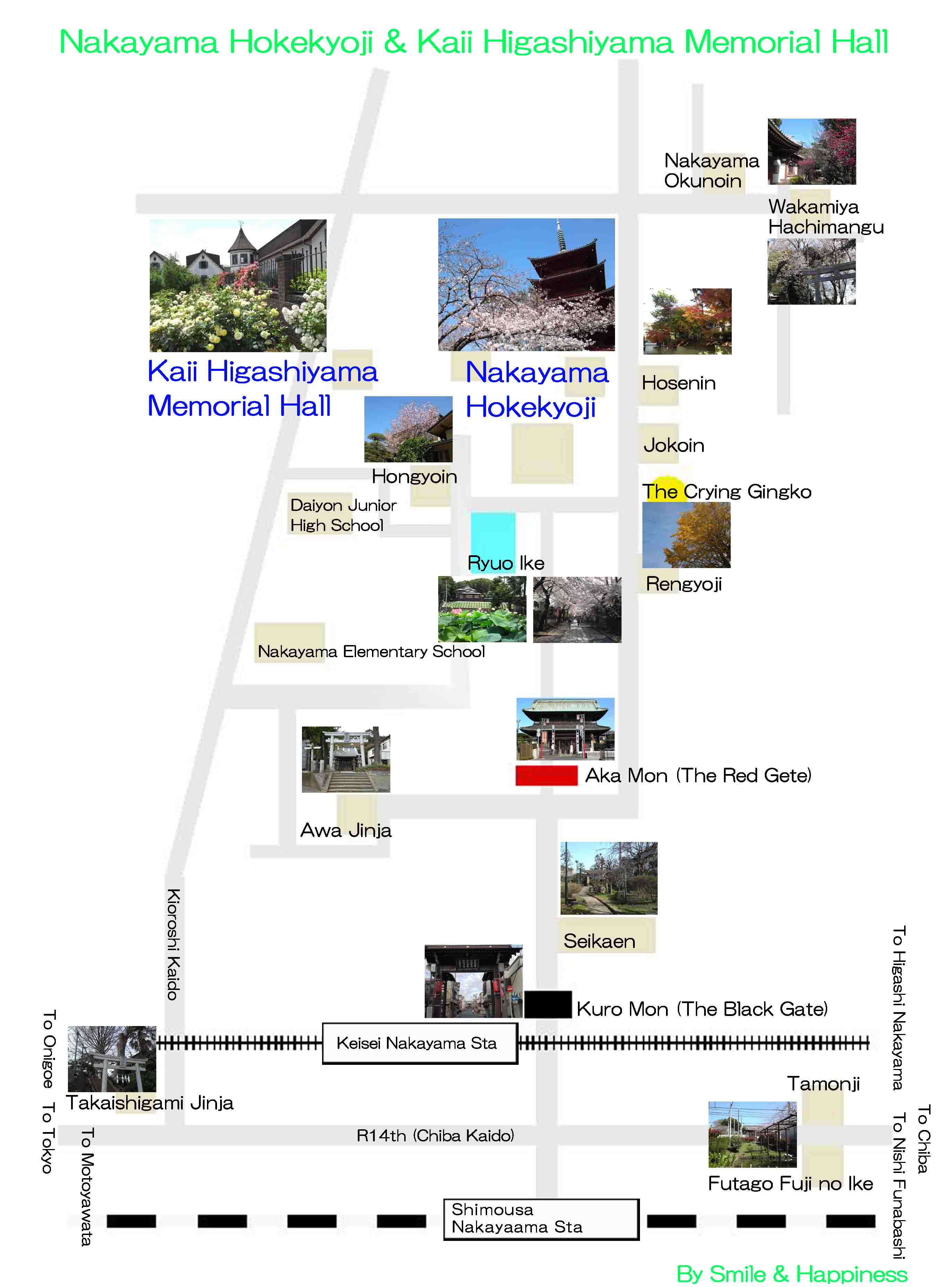
The map near Hokekyoji and Kaii Higashiyama Memorial Hall
PDF of the map near Hokekyoji and Kaii Higashiyama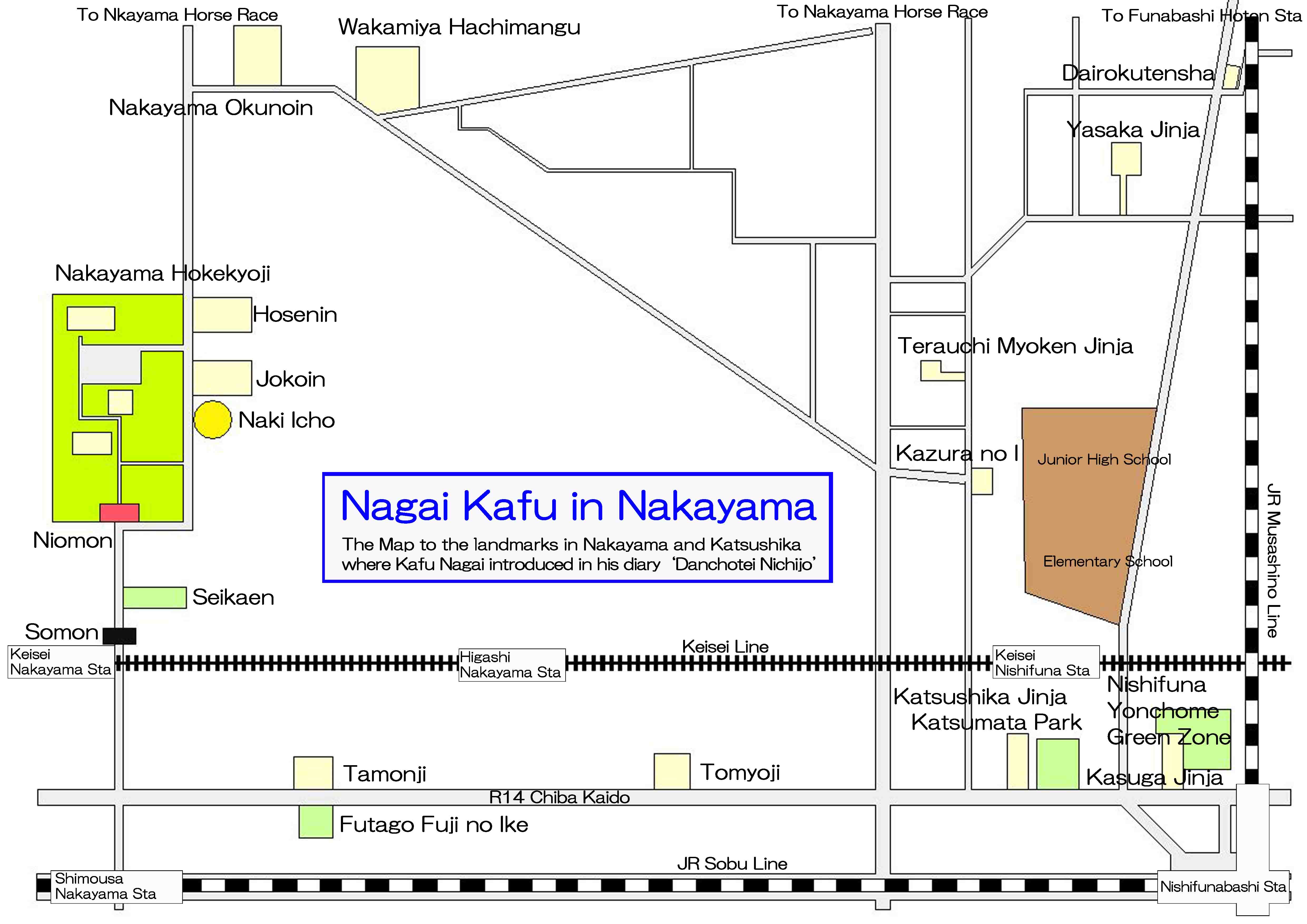
The map to the landmarks where Kafu Nagai introduced in his book
PDF of the map of the noted spots where Kafu Nagai visited- The Myoken-do Hall in Nakayama Hokekyouji Temple has great accessibilities from both Narita and Haneda International Airport.
- From Narita International Airport, take Keisei-line and get off Keisei-Nakayama Sta, take minimally 40 minutes from Narita Airport.. And also take JR Sobu-express line, transfer the line at Funabashi to Sobu-Local line, get off Shimousa-Nakayama Sta.
- From Haneda International Airport, take Keikyu-line bound to Narita, and get off Keisei-Nakayama Sta.
- From Tokyo Sta, take Sobu-Express line bound to Chiba or Narita, transfer the line to Sobu-Local line bound to Chiba, Tsudanuma, or Nishi-Funabashi at Ichikawa Sta, get off Shimousa-Nakayama Sta.
- From Akihabara Sta, take Sobu line bound to Chiba, get off Shimousa-Nakayama Sta.
- Take 5 minute walk from Keisei-Nakayama Sta, and take 8 minutes walk from Shimousa-Nakayama Sta.
- 2-10-1 Nakayama, Ichikawa-shi, Chiba-pref, Japan
Slide Show Movies of Sakura Blossoms in Nakayama Hokekyoji Temple
The Photo Movie of Cherry Blossoms in Nakayama Hokekyoji in 2020
The Photo Movie of Cherry Blossoms in Nakayama Hokekyoji in 2019
Let's enjoy viewing Sakura Blossoms in Nakayama Hokekyoji!
Sightseeing in Nakayama Shomousa With Mangas
Sightseeing in Nakayama Hokekyoji Temple with Manga (Long Version)
Sightseeing in Nakayama Hokekyoji Temple with Manga (Short Version)
The Landmarks in Nakayama Hokekyouji Temple
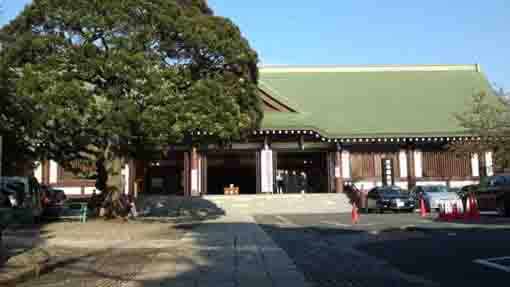
Honin(Taikyakuden)・Kishibojindo(Sonshindo)
Takikyakuden is the main hall of Hokekyoji and it has the business office and Kishibojindo Hall dedicated to the goddess of children on the end of the long corrido of the main hall.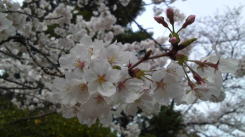
The Four Seasons In Hokekyoji
In spring, there is millions of cherry blossoms in Hokekyoji and in summer, lotus blooms on ryuo-ike pond. In fall, there are beautiful colored leaves. Every season, visitors could enjoy seeing the sights.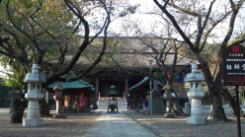
Soshido(Daido), the nationally important cultural property
It is characterized the twin hip-and-gable roof structure (hiyoku-irimoya-style), and hengaku written by Koetsu Honami hangs in front.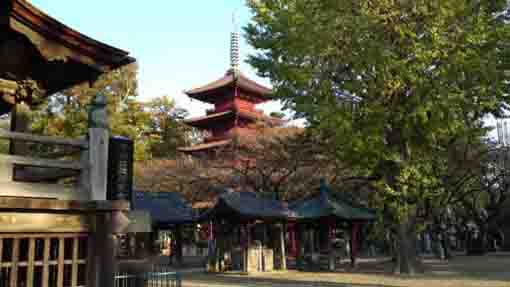
Goju-no-to (the five-story pagoda) , the nationally important cultural property
It was built in early Edo period (1622) by request of Koshitsu Honami supported by Maeda Family in Kaga.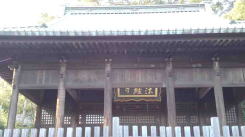
Hokke-do(the nationally important cultural property)
It was built in Kamakura period.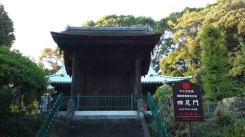
Yon-soku-mon (the nationally important cultural property)
It was moved from Aizen-dou in Kamakura 700 years ago.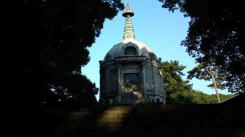
Shougyoden (the treasure hall)
It was designed by the famous architect Chuta Ito, it stores many scripts written by the Founder Nichiren.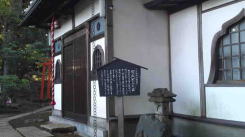
Shogan-jyoujyu-kigan-do (kiyomasa-kou-dai-zingi-do)
It enshrines Kiyomasa Kato, one of the most famous daimyo in Sengoku period.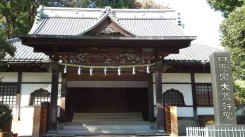
Aragyodo Hall (the hall where Buddhiist priests practice for 100 days in winter severly)
From Nov 1 to Feb 10, hundreds of Buddhist priests practice severly every year.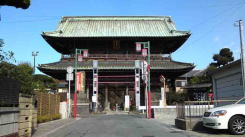
The Nio-mon Gate (The Deva Gate)
The henguku hunged in front of the gate was written by Koetsu Honami, famous artist in Momoyama Period.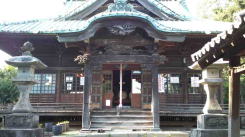
Setsu-do
It was built for worshipping Jurasetsunyo, Kishibozin, Daikokusama.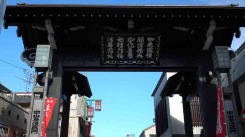
Black Gate(a tangible cultural asset by Ichikawa City)
It is also called Sou-mon (the main gate).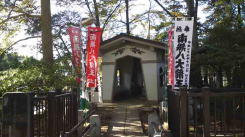
Hachidai-ryuo-do
The founder Nichiren built the small shrine to dedicate the dragon god to pray for rain.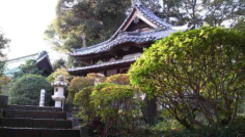
Ugazin-do
It enshrins Ugazin who is the guardian deity of Hokekyou-ji Temple.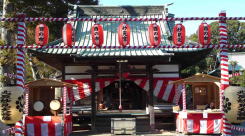
Myouken-do
It dedicates Hokushin Myouken Star that the Chiba Family deeply believed in, Hokekyoji traditionally succeeds. In November, Tori-no-ich is held in the site to dedicate the star.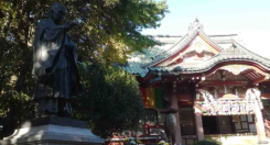
Oku-no-in (the first place where Nichren had preached at)
The founder Nichiren preached first time at the Toki's castle called Wkakamiya Yakata. And Toki built a temple 'Hokkeji', it is the origin of Oku no In.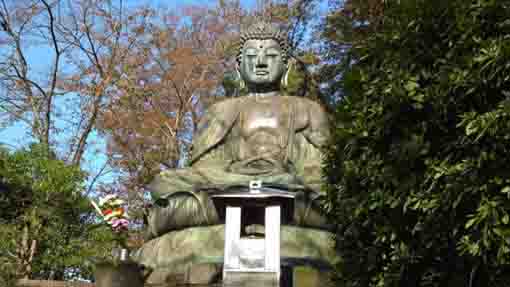
The Great Buddha(The Seated Statue of Shaka Nyorai)
It was built in 1719 by famous caster Ota Suruga-no-kami in Kanda. It is the bigest great Buddha in Chiba prefecture.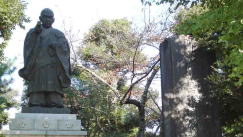
The statue of Nichijo and Naki-Icho
Nichijo was the first abbot of Nakayama Hokekyoji Temple and Naki Icho is a gingko tree having a sad legend.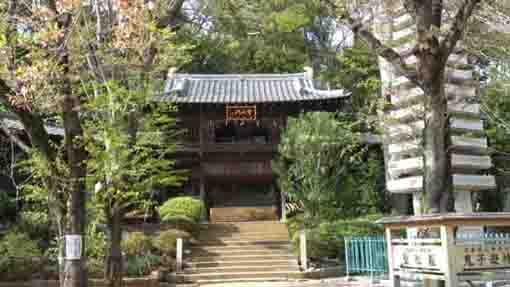
Kagami-ike-ato (the remain of the pond like a mirror), Emado hall, Hoden-mon gate, Ryuenkyo bridge
There are some other landmarks in Nakayama Hokekyoji Temple.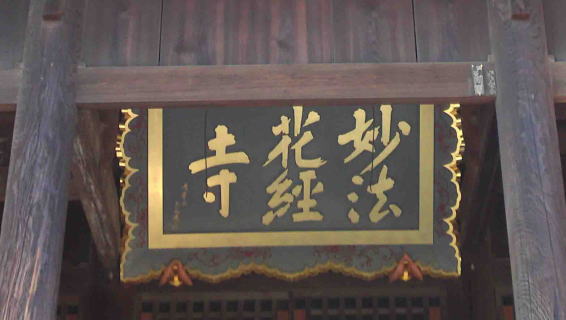
The artists, poets and writers related to Hokekyoji Temple
Koetsu Honami specially remained his calligraphy in Hokekyo-ji Temple, and Shiki Masaoka, Kafu Nagai discribed it well.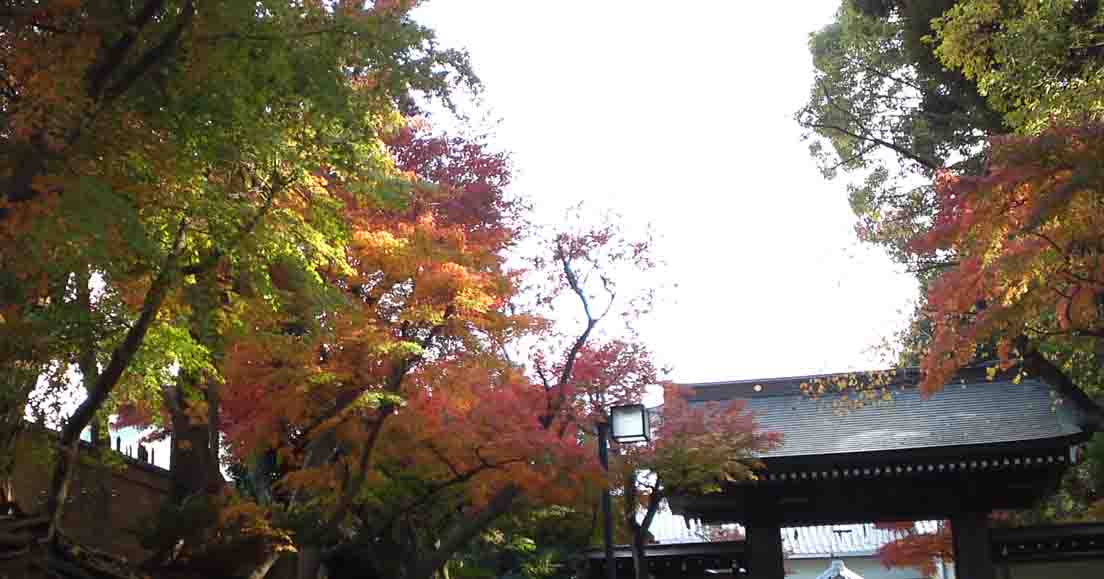
The Tacchu Temples and the Branch Temples in and around Nakayama Hokekyoji Temple
Some tacchue temples are introduced in this page.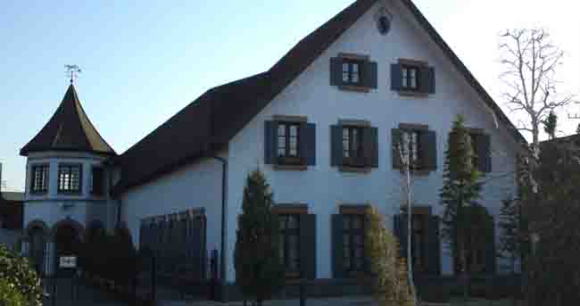
A Walk on the the area around Nakayama Hokekyoji Temple
There are some noted spots, Kaii Higashiyama Memorial Hall and so on, near Hokekyoji.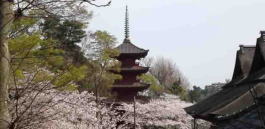
The Popular Viewing Sakura Spot / Nakayama Hokekyoji Temple
Cherry blossoms in Hokekyoji are amazingly wonderful.- 広告 Advertisement -
